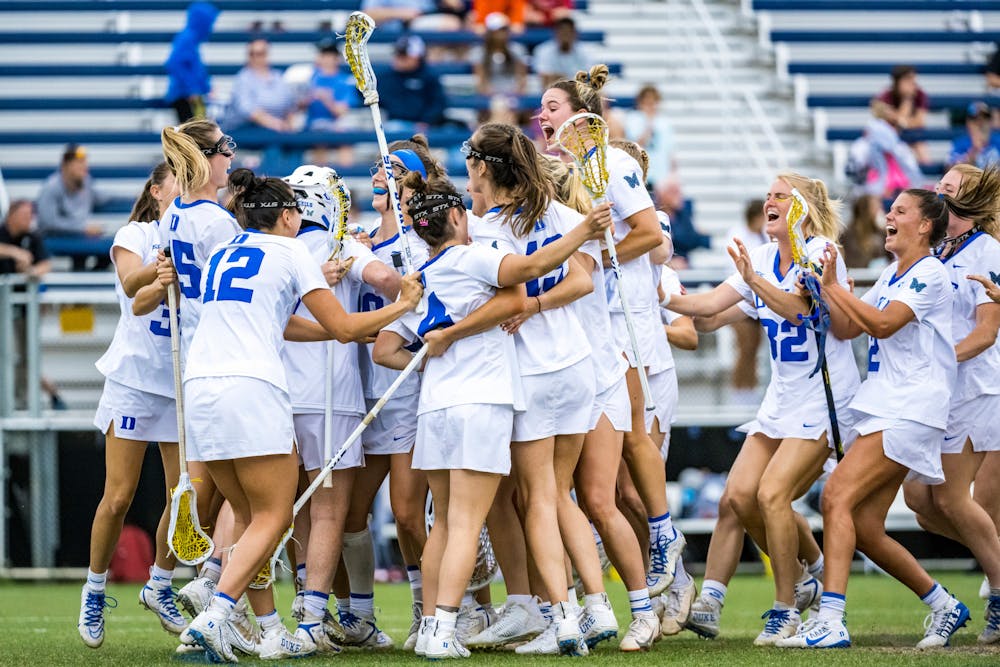The 2011 film Moneyball starring Brad Pitt and Jonah Hill, based on the true story of the successful 2002 Oakland Athletics season, mainstreamed the concept of advanced sports analytics. Yet over 10 years removed from the movie’s release and nearly 20 from the story’s genesis, we are still in the dawn of the advanced analytics age.
Professional franchises have begun implementing analytics more often to make draft and game day decisions. Goliath college athletic programs have created teams of people to analyze them. And these stats have even worked their way into a significant portion of sports journalism. But what many people don’t know is that this sci-fi way of exploring professional squads and revenue sports in college programs has also trickled down to other teams. Through advancements in the field, we can look at programs that don’t necessarily have the same budget or personnel structures that sports such as college basketball and football have.
The frontier of sports analytics only became widely available recently through hobbyist and crowdsourced data. Using the website Lacrosse Reference, which analyzes college teams using metrics beyond the stat sheet, let’s dive into how we can use these numbers by looking at the Duke women’s lacrosse team.
Duke is 15-2, its best season start since 2007, and is ranked No. 7 nationally. Though the Blue Devils concluded their regular season with a disappointing 18-4 loss at North Carolina, the future is bright as they take on Notre Dame in the quarterfinals of the ACC tournament Friday.
But despite Duke’s impressive 6-2 conference record, the ACC tournament won’t be a piece of cake by any means. The ACC is the strongest conference in women’s lacrosse, with five teams ranked in the top-20 of the Elo rating—a stat used to measure a team’s strength. The closest five conferences each have only two teams ranked top-20 within the metric.
However, Duke has a few statistical advantages. The Blue Devils have the highest possession time among all Division I teams, and they have the ACC’s top raw player contributions metric—a measure of a team’s depth weighted to favor contributions off the bench. In cumulative efficiency, which combines offensive and defensive efficiency, Duke ranks third in the ACC, following North Carolina and Boston College.
You can further break down efficiency by type of possession. Duke scores 38.2% of the time on offensive possessions after a defensive stop, lower than North Carolina’s 43.3% efficiency but ahead of Boston College’s 35.0%. The Blue Devils trail both teams in efficiency after ground balls or turnovers, with a 37.0% rating. However, Duke excels relative to these two conference rivals in offensive efficiency off draw controls. The Blue Devils carry a 40.9% mark in this stat compared to North Carolina’s 37.2% efficiency and Boston College’s 36.5% efficiency.
In conjunction with Duke’s average possession time and depth stats, these efficiency stats tell a more complete story about the Blue Devils’ strengths and how they can achieve success. First, and perhaps most obvious, is the impact of draw control specialist Maddie Jenner. She is in the 94th percentile of Division I players with an expected goals added per game of 3.45. She also leads the NCAA in draw controls per game with 12.47, the next-highest being Northwestern’s Jill Girardi with 10.64 per game.
With more draw controls, Duke has an edge against its opponents, as it can cycle through its deep roster if it has more minutes with the ball. Additionally, when it clinches more draw controls, it gets more opportunities on offense—allowing it to get the ball to players like Catriona Barry, who ranks 10th in the nation in expected goals added.
Duke has some defensive weaknesses on the other side of the field. It ranks 41st nationally with a 28.1% defensive efficiency. Additionally, when the team experiences a turnover, or the opponent takes a ground ball, it concedes a goal 30.2% of the time. Looking back at stats from the Blue Devils’ loss against North Carolina, we can see that struggles recovering from turnovers were likely a large factor in the brutal final score. Duke turned the ball over on 41.7% of its possessions that game and conceded a total defensive efficiency of 50.0%.
The Blue Devils’ usual strengths—time of possession and draw control percentage—were there, as they led the game in both metrics, but total efficiency wasn’t. Duke’s offensive efficiency was just 11.1%, its shooting percentage was a mere 22.2% and there were barely more shots per possession than turnovers. For the Blue Devils to have had a fighting chance in that game, they would’ve needed an exemplary defensive showing, which was not the case.
Still, the team has a great season to build on and has great players such as Jenner and Barry, to name a few, on their side. Looking at all these metrics not only allows us to evaluate the team but also shows where it is likely looking to improve. With No. 4-seed Duke's run at the ACC tournament beginning Friday against No. 5-seed Notre Dame, surely the Blue Devils will utilize the skills that have seen them excel and look at the numbers to see where they must improve.
Get The Chronicle straight to your inbox
Sign up for our weekly newsletter. Cancel at any time.

Sasha Richie is a Trinity senior and a sports managing editor of The Chronicle's 118th volume.

